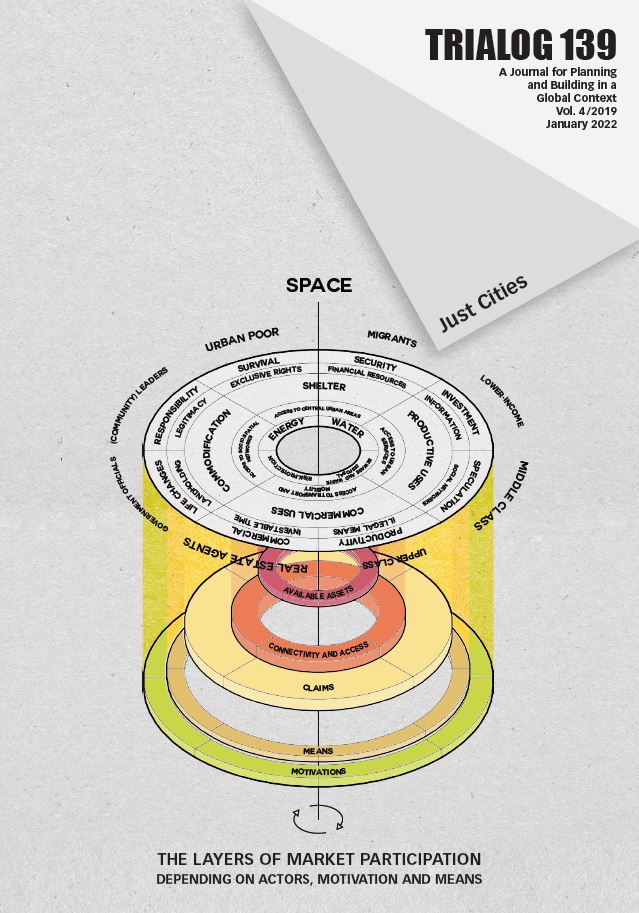Just Cities

According to the editors of this journal issue, humans have an innate sense of justice. From a young age onwards, children recognise and contest perceived injustices. Notions of justice are, however, not universal: they vary between and within societies, influenced by individual beliefs or shared ideologies that co-exist and compete. Injustice can be observed in cities worldwide: from dispossession and displacement from property to forced evictions, through spatial segregation and related politics of difference to the inequality of access to places of necessity, to racial and gender discrimination. These and many more injustices, which remain ever so present and ever so eruptive, relate to distributional as well as procedural injustice.
The articles in this issue suggest that despite, and because of, different interpretations of justice, a perfectly just city is an illusion. It is important to take different perspectives into account when assessing justice in a city, and/or spatially. This issue includes experiences of cycling in the city of Nairobi, as well as a photo essay on challenges for pedestrians in the same city. Among others, it is through these accounts of everyday practices that spatial justice can be glimpsed and just cities can be imagined.
Abstract based on original source.


Comments